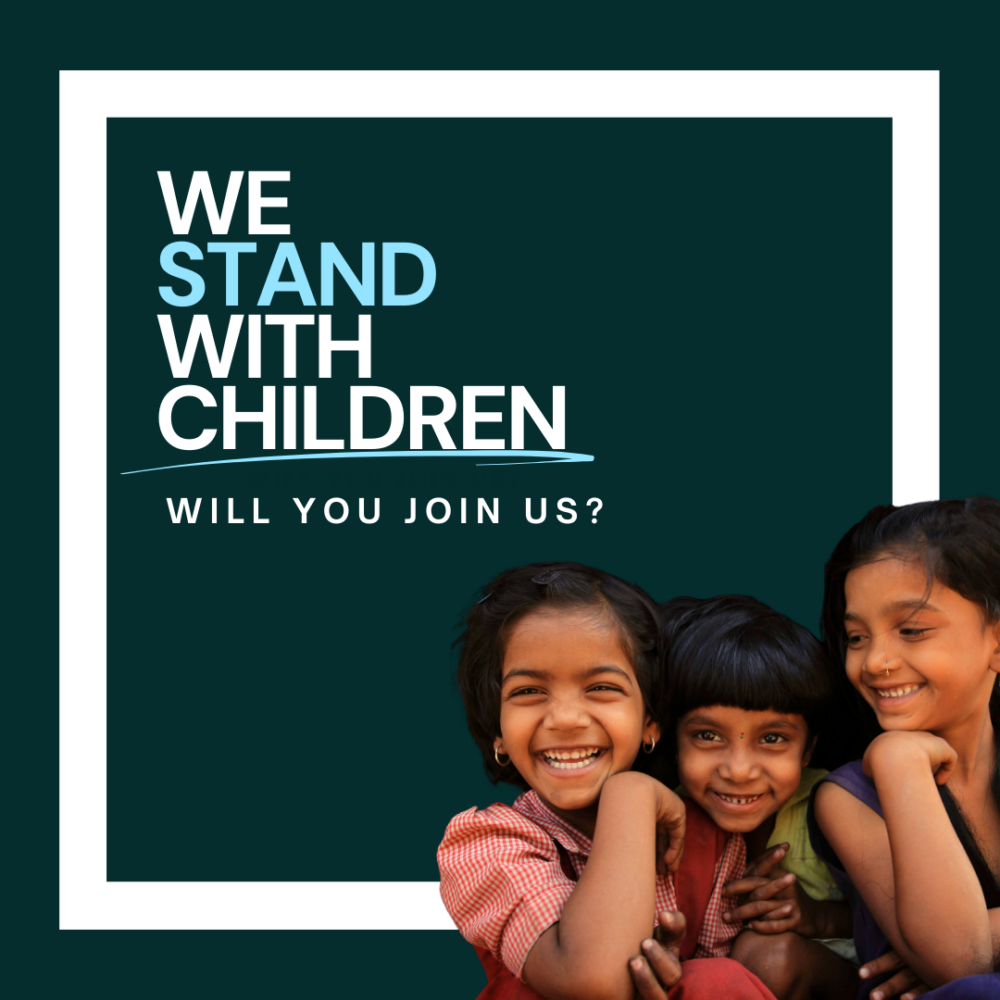
Estamos con los niños. ¿Te unes a nosotros?
La congelación del financiamiento de la ayuda exterior de Estados Unidos está amenazando la estabilidad de las organizaciones comunitarias y su trabajo vital en favor de los niños y jóvenes de todo el mundo.
Obtenga más información sobre nuestra respuesta de emergencia.
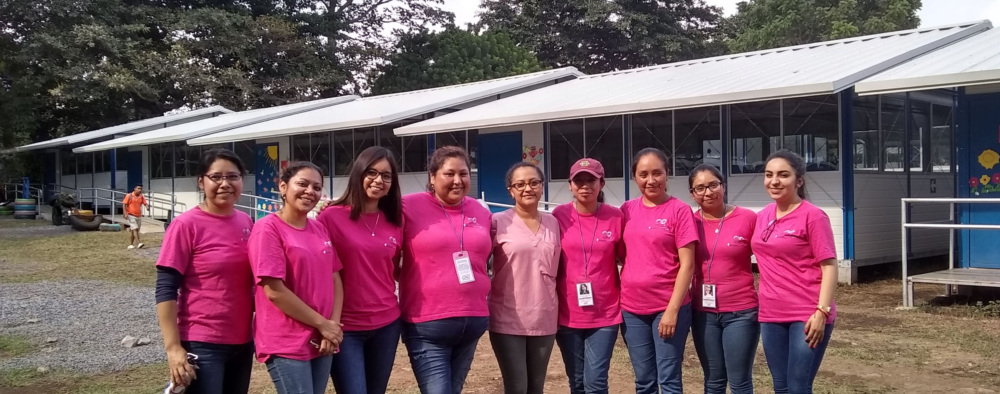
Primeros pasos hacia la recuperación para los sobrevivientes del volcán
“Cuando me desperté al día siguiente, la vida tal como la conocía había cambiado para siempre”. – un niño del pueblo El Rodeo, hablando sobre la erupción del Volcán de Fuego en Chimaltenango, Guatemala
Cuando el Volcán de Fuego de Guatemala entró en erupción en junio, los habitantes de los pueblos de los alrededores apenas recibieron avisos. Un desprendimiento de roca volcánica sepultó el pueblo de El Rodeo, en Chimaltenango; en el departamento limítrofe de Escuintla, la gente huyó del pueblo de San Miguel Los Lotes cuando una nube de ceniza volcánica se tragó sus casas.
Nuestro socio, la Asociación Generando (ASOGEN), ubicada en Chimaltenango, respondió de inmediato a la emergencia. La organización no es ajena a los desastres, ya que sirvió como un recurso comunitario crucial después del huracán Stan en 2005.
Tras una evaluación de los daños y un análisis de las necesidades sanitarias, ASOGEN determinó cómo responder y elaboró un plan. En los días posteriores al desastre, la organización se centró en satisfacer las necesidades inmediatas, como proporcionar alimentos, ropa y medicamentos a las familias afectadas por la erupción.. Parte del refugio de ASOGEN, que se utiliza principalmente como refugio seguro para las víctimas de la trata de personas, se convirtió en un centro de distribución de suministros de emergencia. En las semanas siguientes, ASOGEN diseñó un programa de atención psicosocial que se centra en ayudar a los niños y jóvenes a procesar y afrontar el trauma que han vivido.
Hace unas semanas viajé a Guatemala para ver el trabajo de ASOGEN en acción. En Escuintla, visité el Albergue de Transición Unifamiliar, un refugio administrado por el gobierno que brinda alojamiento a familias desplazadas de El Rodeo y Los Lotes.
Al llegar al refugio, parece que la vida transcurre con normalidad. Los niños juegan, las madres se ocupan de las tareas domésticas, sonríen y conversan. Cerca del refugio, soldados estadounidenses y guatemaltecos trabajan en la construcción de viviendas temporales para aliviar el hacinamiento y dar a las familias desplazadas sus propios espacios.
[imagen_grande]
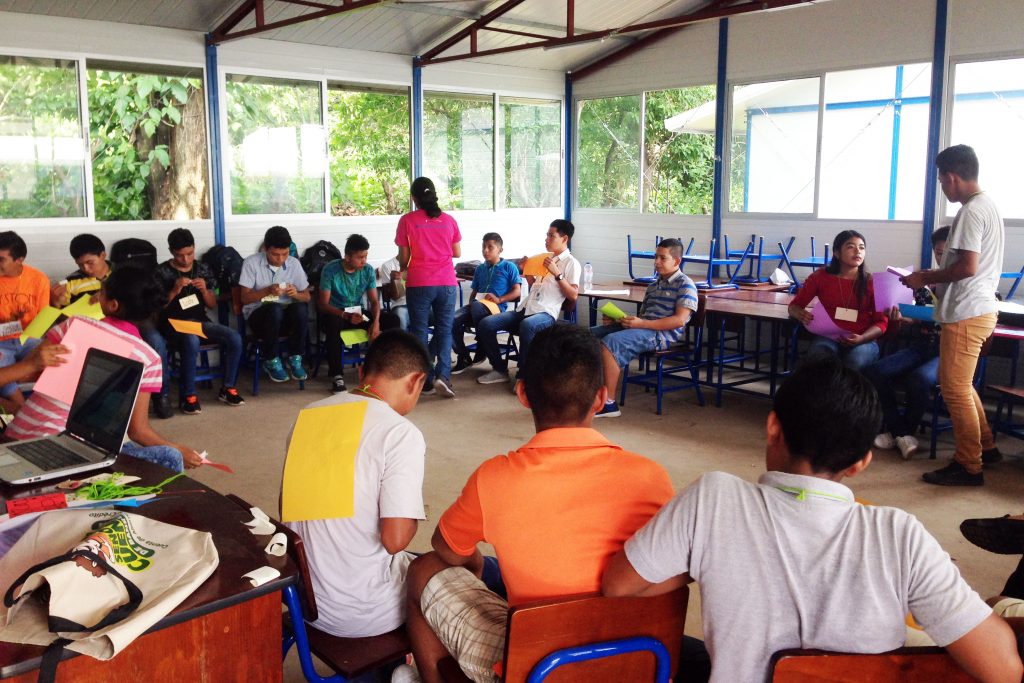
[/imagen_grande]
Sin embargo, bajo la superficie todo ha cambiado. El albergue cuenta con una escuela temporal donde los estudiantes del Instituto por Cooperativa de Aldea El Rodeo, una escuela que fue destruida por el volcán, están terminando su año escolar. Debido a que algunos estudiantes presentaron conductas postraumáticas, la directora de la escuela, Julia Rodríguez Girón, se comunicó con ASOGEN y pidió ayuda.
Cada dos semanas, el personal de ASOGEN visita el albergue y brinda atención psicológica y médica. Según Marian Salazar, médica de ASOGEN, los estudiantes desplazados sufren de diversas dolencias, como enfermedades del tracto urinario, dermatitis e impétigo. La atención psicológica la brinda el equipo de siete personas de ASOGEN, que incluye psicólogos y trabajadores sociales. Cada uno de ellos trabaja con un grupo de aproximadamente 25 estudiantes y cubre un plan de estudios que incluye temas como el control de las emociones y el manejo del estrés.
Los estudiantes comparten sus emociones en grupo e intentan sobrellevar la tristeza de perder a sus familiares, amigos y medios de vida. Un elemento especialmente conmovedor es la “quema de emociones”, en la que los estudiantes escriben sus sentimientos en un papel. Luego, el papel se quema, simbolizando la eliminación de las emociones que ya no quieren sentir.
Tuve la oportunidad de asistir a uno de los talleres y ver de primera mano las condiciones en las que se llevan a cabo. Tanto el gobierno como las autoridades escolares comprenden la importancia de los programas y han dispuesto que ASOGEN facilite los talleres para estudiantes, mientras que el Ministerio de Educación ofrece un taller similar para profesores.
[imagen_grande]
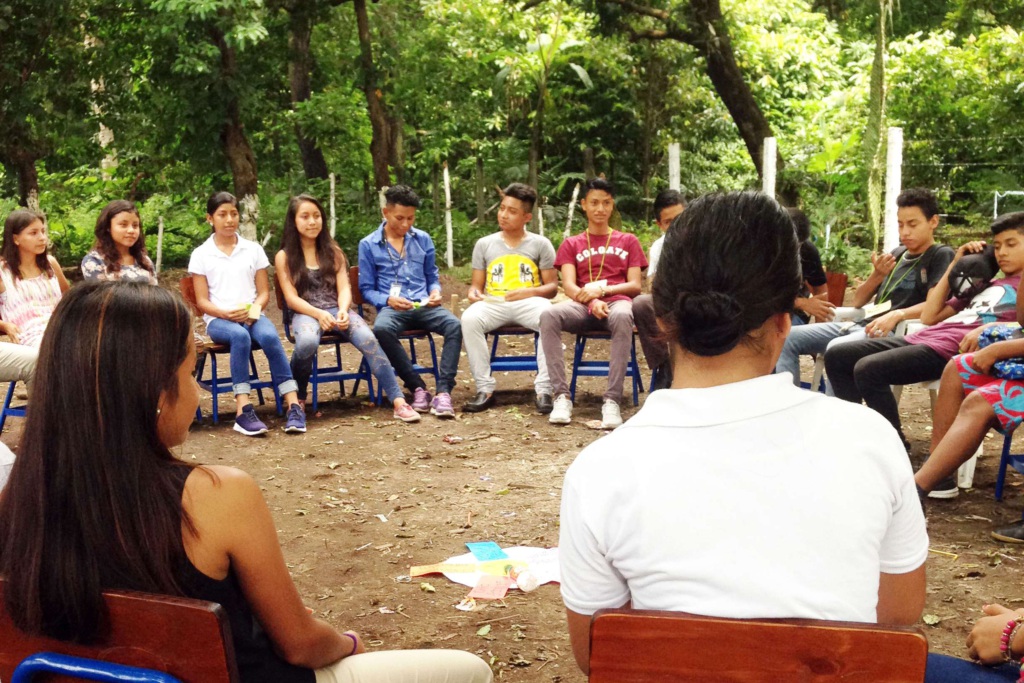
[/imagen_grande]
El día de mi visita, la mayoría de los grupos se reunieron en las aulas de aluminio del refugio, mientras que un grupo se reunió bajo un gran árbol de aguacate que proporcionaba sombra contra el intenso calor de Escuintla. En la sesión a la que asistí, los estudiantes se sentaron en círculo con una ruleta hecha de papel, en la que estaban escritas una serie de emociones: esperanza, desesperación, miedo, tristeza, ira, felicidad. Escuché mientras los estudiantes giraban la ruleta y analizaban sus sentimientos. Muchas de las voces que escuché transmitían la tristeza que los estudiantes aún sienten después del desastre.
“Antes de la erupción del volcán, mi vida era diferente”.
“Desde que se produjo la erupción no he tenido un momento de alegría”.
Una de las preguntas que me llegó al corazón fue cuando la psicóloga de ASOGEN preguntó sobre algunos amigos en común que murieron en el derrumbe de El Rodeo. Preguntó a los estudiantes cómo se sentían con respecto a la pérdida de esos amigos y cómo querían recordarlos.
“Ese viernes, Karen, Ludwig, Jefferson y yo estábamos muy felices de salir de la escuela porque el período de exámenes había terminado”, dijo uno de los estudiantes.
Karen, Ludwig y Jefferson murieron, pero mencionar sus nombres en la sesión del taller es un cierre para quienes los recuerdan.
A través de la implementación de este taller, el equipo de ASOGEN está monitoreando el progreso de la salud mental de los estudiantes. Tanto el equipo de ASOGEN como la directora de la escuela saben que la recuperación del duelo y la aceptación de la realidad es un proceso a largo plazo, pero ya están viendo señales de mejora.
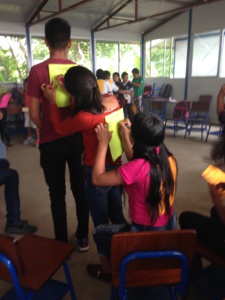 Una de las actividades del taller se centra en desarrollar una actitud positiva ante la vida. Cada alumno se pega un papel en la espalda y otros alumnos escriben frases positivas y alentadoras sobre sus compañeros, sus familias y su vida futura. Algunas de las frases que tuve la oportunidad de leer y fotografiar muestran que estos niños se apoyan entre sí y ven chispas de esperanza en sus vidas.
Una de las actividades del taller se centra en desarrollar una actitud positiva ante la vida. Cada alumno se pega un papel en la espalda y otros alumnos escriben frases positivas y alentadoras sobre sus compañeros, sus familias y su vida futura. Algunas de las frases que tuve la oportunidad de leer y fotografiar muestran que estos niños se apoyan entre sí y ven chispas de esperanza en sus vidas.
“Espero que en la vida te vaya mejor”.
“Deseo lo mejor para tu familia.”
“A pesar de estar triste, me siento feliz porque mi mamá y mi hermana están bien”.
“Todavía tengo miedo, pero estoy vivo y eso es suficiente motivación para seguir adelante”.